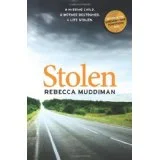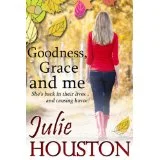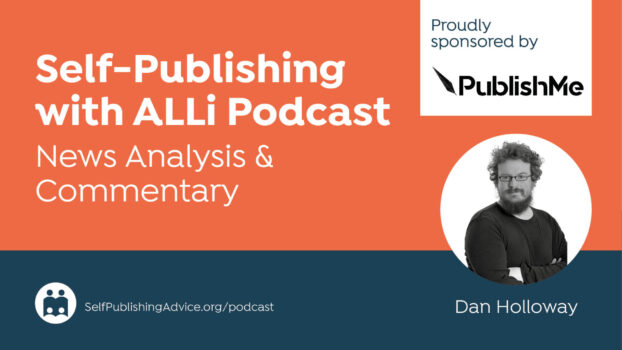Diana Horner, co-founder of ebook conversion and distribution service www.ebookpartnership.com, counsels self-published authors to consider all their ebook distribution options, rather than automatically plumping for Amazon.
 I speak to authors and publishers every day. When I am asked the question “Should I try Amazon KDP Select? Or list my ebooks on all the retailers I can?” I reply with several questions of my own.
I speak to authors and publishers every day. When I am asked the question “Should I try Amazon KDP Select? Or list my ebooks on all the retailers I can?” I reply with several questions of my own.
Invariably, we reach the conclusion that there are pros and cons, and experimentation is sensible. Yes, that's me perched on the fence!
Four years and thousands of books later, the only thing I am completely certain of is that each title has different opportunities and potential in the market. The landscape changes rapidly, and all ebook retailers are fighting hard for market share.
Amazon KDP Select is developing a cosy home for independent authors, with extra touches that tempt you to stay put and work within a familiar system. You have to commit to a minimum period of exclusivity (for ebook versions) of 90 days in order to access the perks of the program. Your ebook will appear in the Kindle Owners' Lending Library, and we are seeing growing revenue from borrows. In fact, per-borrow rates can be higher than royalty rate per sale, depending on the list price. The five ‘free promotion’ days can still be a useful option, if planned carefully.
The new tool in the KDP toolkit is the Kindle Countdown Deals option. So plenty there to recommend a single retailer approach – if that retailer is Amazon. Your price will be stable (unless you change it), you can focus on attracting one buying audience, the perks are great. And yet….
“How will you feel if you hear from someone who wants to buy your ebook for their Kobo reader, or Nook (Barnes and Noble), but discover it is Amazon only?”
It is easy to focus on the perks of KDP Select. There are lots of ways to access ebooks bought from Amazon, but do you want to lose one precious reader by restricting availability?
“Libraries are buying more ebooks, could this be a market for you?”
We upload e-books to Gardners and also to Overdrive (global network of 22,000 libraries and retailers), and some of our clients are beginning to see significant sales, from Arkansas to Woollahra, and Surrey County Council!
“What about Google?”
This time last year I was discussing with clients regular price discounting by Google (and Gardners and B&N), which was impacting Amazon ebook prices because Amazon would price match. Authors wanted their ebooks to be available on Google Play, but Google ebook sales were small, and the vast majority of sales of most titles were made on Amazon. It seemed sensible to get off Google and maintain price (as far as possible) on Amazon.
Today, I am not so quick to recommend this course of action. Google is a powerful tool for authors and publishers, and they will almost certainly continue to work on ways to shepherd their vast user database to Google Play to buy things, as a result of a simple search.
“Do you really want to bypass Kobo, Apple, and Barnes & Noble?”
Each of the above has its own loyal customer base. Add together and you could argue that you are leaving money on the table, by choosing to sell on Amazon only.
This is quite a complex subject. As with all aspects of independent publishing, nothing is particularly straightforward! We haven't touched on ebook subscription services, or ISBNs or US tax withholding for authors outside the US.
I strongly recommend that you look into all of the options, and share intelligence with fellow authors and publishers before uploading your book anywhere. Then, keep checking and refining your own strategy to suit your market and the industry developments.







Thank you, Diana, for your balanced and insightful overview of ebook distribution options. It’s refreshing to see someone acknowledge the benefits of Amazon KDP Select while highlighting the potential missed opportunities with exclusivity. Your point about each book’s unique potential is critical, and self-publishing has no one-size-fits-all answer.
I enjoyed being reminded of underutilized channels like Google Play and library distributors like Overdrive and Gardners. Many authors, particularly beginning authors, may be unaware of the long-tail benefit of publishing their books on more venues.
The emphasis on staying adaptable and continually reassessing distribution strategies resonated. The market is evolving quickly, and what works well today might need a rethink tomorrow. Thanks again for sharing your experience and encouraging authors to be strategic rather than reactive.
This is a great blog. Choosing the best among so many is indeed a difficult task. MagicBox is the one I’ve been using since a lot of time now, allows ebook publishing and distribution.
[…] e-book is a more significant investment of time and resources, you want to set aside some time to promote it. That can mean sharing it across your social media channels or creating an email campaign revolving […]
I regularly call out authors who only publish on Amazon and not Kobo (where I purchase my eBooks.) In some cases the author has offered to send me the book for free, in others I’m SOL. Or in a few cases the authors then put the book up on Kobo and I am able to purchase it in a day or two afterwards.
[…] If you don’t have the time to handle all the minutia of publishing your e-book, the right distribution service can take a huge load off your shoulders. However, do keep in mind that most services come with guidelines of their own, and you’ll need to deal with them to update your e-book and receive payments. If you don’t mind those small drawbacks, then by all means, consider the option. […]
[…] If you don’t have the time to handle all the minutia of publishing your e-book, the right distribution service can take a huge load off your shoulders. However, do keep in mind that most services come with guidelines of their own, and you’ll need to deal with them to update your e-book and receive payments. If you don’t mind those small drawbacks, then by all means, consider the option. […]
I really love your article. I would like to ask if you could provide a list of ALL possible distribution sites (ex: Amazon, Smashwords, BabyBooks, Lulu, etc.). with their Pros and Cons in a table. Thanks al lot.
I have had absolutely no success with KDP. My novel was published over a month and saw no sales. I put it up for free for 2 days and got 105 downloads but now its back to obscurity. The price I set was $2.99. I just lowered the price to $1.99 but I’ve been reading the profits are very minuscule due to 35% royalty. What I want to ask is that I don’t understand the 90 day thing. Can I not put the book up for sale in any other e-publishing platform at the moment? My experience with KDP has left me disillusioned with it and I am not satisfied.
[…] Reaching readers: how to choose self-publishing distribution options […]
Most of the writers I tutor on creative writing seriously just want to write and have as little to do as possible with selling and marketing. Re-formatting for each book sellers platform is another nightmare for new authors who are not tech suave and just want to get their work out there. There is so much noise online that it is tough to separate the real advice from the scams when it comes to e-publishing. I agree Smashwords is a fast, cheap and fairly easy solution for the inexperienced new author to be able to show off his first book to friends and coworkers. It is great for me to recommend because they have their own detailed instructions so I do not have to go into explaining how to do it all, which is complicated for each book selling platform. Amazon does not promote well if you are not promoting yourself and new authors can take a few years to get self-marketing down to where it is effective. http://www.anewtale.com/kindle-publishing.html Eventually a serious author will have to spend time learning about e-book distribution because once you wrote it you want to get as much mileage as possible out of each book published which means you want to sell your books everywhere! But I do not like suggesting new authors concentrate on selling their books because I want them writing their next ones!
I’m amazed, I must say. Seldom do I come across a blog that’s both educative
and entertaining, and let me tell you, you have hit the
nail on the head. The issue is something that too few people are speaking intelligently about.
I am very happy I came across this during my search for something concerning this.
I’m not sure where you’re getting your information, but good topic.
I needs to spend some time learning much more or understanding more.
Thanks for magnificent information I was looking for this information for my mission.
Thank you, great advice and complexity is truly at the heart of this topic…something I struggle with still! Tweeted 😉
Reality Writer for His Glory!
[…] More on this from my recent blog post on the Alliance of Independent Author website: https://selfpublishingadvice.org/reaching-readers-how-to-choose-self-publishing-distribution-opti… […]
First of all I want to say terrific blog! I had a
quick question that I’d like to ask if you do not mind.
I was curious to know how you center yourself and clear your head prior to writing.
I’ve had trouble clearing my mind in getting my thoughts out there.
I do take pleasure in writing but it just seems like the first 10 to
15 minutes are lost just trying to figure out how to begin.
Any recommendations or hints? Cheers!
Hi: Getting your thoughts centered, I guess we know what Hemingway’s response was to the question: “I stare at the blank page until drops of blood appear on my forehead.” Well, it doesn’t have to be that punishing. I write an outline, or treatment of the beats of the the script before I rewrite the story. Each day I start by reading everything that I wrote and added the day before, and then continue. At the point that I end for the day,I type my notes for the coming scenes on the script pages, and delete them as I write. I don’t use the bunches of white cards on a posterboard. It works for me, may not work for you. We develop our own methods of work.
Best success… Warren.
[…] Learn Extra: How To Select Self-Publishing Distribution Options for Ebooks […]
[…] Reaching Readers: How To Choose Self-Publishing Distribution Options for Ebooks. […]
[…] Diana Horner explains why you should consider more distribution options than Amazon KDP Select for your self-published ebook e.g. Kobo, Nook, Google Play, etc. […]
Hi Warren,
Smashwords has undoubtedly been the catalyst for great change in the self publishing industry and they provide a great service.
There are many ways to get your eBooks onsale, and you can create a strategy to suit you and your budget. We will always work with our clients to recommend the best plan for their individual circumstances. Some of our clients manage their own accounts with Amazon, Apple, Kobo, for example, and they will use our service to reach other retailers. Others simply want to monitor their sales and royalty information in one place, and to reach as many retailers as possible, and so we deal with everything.
Quick checklist of features to compare:
1) Distribution network. Where do you want your eBooks to be on sale?
2) Royalty revenue, do you want to keep 100% of your royalties from the retailers? This usually involves paying a set up fee upfront. Would you prefer to upload free and pay a percentage of royalties to your distributor?
3) Payment, how do you want to be paid? How often would you like to be paid?
4) Do you own your eBook files, and can they be distributed freely by you.
5) How do you access your sales and royalty information.
6) How easy is it to change descriptions, prices etc? What are the costs?
Different distributors/aggregators offer a variety of plans, and options. What works for one multi tasking author with a full time job, may not suit someone else who has more time to devote to the management of a particular project, or a publisher with 50 titles.
What Warren said. Smashwords was one of the first to allow mass e-book distribution to multiple retailers. I love ’em.
Thanks Diana:
Your comments and advice are greatly appreciated. You didn’t mention Smashwords as a viable opportunity for e-book distribution. They are a competitor of Amazon, and distribute to Kobo, Apple, B & N, Oyster, Scribd, and several other e-book sites. No exclusivity required, and an ISBN # is free. They will also reformat scripts. Check it out. There are other advantages. I would consider Smashwords for an e-launch, and after a respectable time, utilize Amazon to bolster sales within a market that may already be aware of your e-books. You are also free to utilize any other distributors you wish. Amazon has 5 Free promo days per month, here you can stage a pre-orderer’s marketing tool to stack up orders for free e-books until the release date, and the the price becomes valid.
Stay well…
Warren.
A bit wishy-washy…